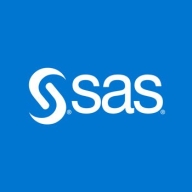

SAS Access and Domo compete in the data analytics and integration space. Domo has the upper hand with its user-friendly dashboards and real-time data visualization, making it attractive for companies focusing on interactive analytics.
Features: SAS Access supports complex data management and transformation tasks with strong data integration features, appealing to users who need advanced data manipulation. Domo engages users with interactive data visualizations, provides a flexible app ecosystem, and focuses on visually-oriented business intelligence solutions.
Ease of Deployment and Customer Service: Domo offers a cloud-based deployment that suits organizations wanting quick implementation without extensive IT support. Its customer service is known for proactive support and quick responsiveness. SAS Access requires more complicated deployment setups but provides in-depth technical support during implementation.
Pricing and ROI: SAS Access generally entails higher upfront costs due to extensive setup and licensing, promising long-term ROI with scalable solutions. Domo's subscription-based model offers cost efficiency and a quicker ROI through flexible pricing, making it suitable for companies wanting scalable investments.


Domo is a cloud-based, mobile-first BI platform that helps companies drive more value from their data by helping organizations better integrate, interpret and use data to drive timely decision making and action across the business. The Domo platform enhances existing data warehouse and BI tools and allows users to build custom apps, automate data pipelines, and make data science accessible for anyone through automated insights that can be shared with internal or external stakeholders.
Find more information on The Business Cloud Here.
We monitor all Data Integration reviews to prevent fraudulent reviews and keep review quality high. We do not post reviews by company employees or direct competitors. We validate each review for authenticity via cross-reference with LinkedIn, and personal follow-up with the reviewer when necessary.